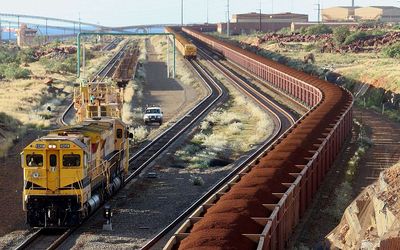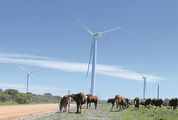Iron ore outperforms market on cyclone
by Jasmine Ng,
2016-03-04 06:55:02.0
SINGAPORE — Iron ore is not sticking to the script, at least for the bears. The commodity that was supposed to be weighed down again this year by rising low-cost supply and poor demand has soared 18%, establishing a foothold at more than $50 a tonne.
The rebound, which means iron ore has outperformed all the members of the Bloomberg Commodity index this year has probably been powered by restocking by Chinese mills and some weather-related disruption to shipments from Australia, according to Capital Economics. These supportive factors might prove temporary, it said.
Iron ore’s upswing has accompanied a revival in the price of other commodities including oil and industrial metals. Glencore CEO Ivan Glasenberg said on Tuesday that raw materials had bottomed, and Australia & New Zealand Banking Group said on Thursday that commodity sentiment had turned in the last fortnight, citing gains in both crude oil and iron ore. Steel prices in China have also climbed.
Iron ore’s gains this year were supported as a tropical cyclone in January disrupted some shipments from Australia’s Port Hedland, the world’s biggest bulk-export terminal, and as Chinese mills began to ramp up output after the Lunar New Year break last month.
National Australia Bank has forecast prices to average $42 this year.
Bloomberg

A train carrying iron ore in Australia. Picture: AFP/Greg WOOD
SINGAPORE — Iron ore is not sticking to the script, at least for the bears. The commodity that was supposed to be weighed down again this year by rising low-cost supply and poor demand has soared 18%, establishing a foothold at more than $50 a tonne.
The rebound, which means iron ore has outperformed all the members of the Bloomberg Commodity index this year has probably been powered by restocking by Chinese mills and some weather-related disruption to shipments from Australia, according to Capital Economics. These supportive factors might prove temporary, it said.
Iron ore’s upswing has accompanied a revival in the price of other commodities including oil and industrial metals. Glencore CEO Ivan Glasenberg said on Tuesday that raw materials had bottomed, and Australia & New Zealand Banking Group said on Thursday that commodity sentiment had turned in the last fortnight, citing gains in both crude oil and iron ore. Steel prices in China have also climbed.
Iron ore’s gains this year were supported as a tropical cyclone in January disrupted some shipments from Australia’s Port Hedland, the world’s biggest bulk-export terminal, and as Chinese mills began to ramp up output after the Lunar New Year break last month.
National Australia Bank has forecast prices to average $42 this year.
Bloomberg
























Change: 0.40%
Change: 0.47%
Change: -0.49%
Change: 0.53%
Change: 1.03%
Data supplied by Profile Data
Change: 1.71%
Change: 1.28%
Change: 0.40%
Change: 0.00%
Change: 1.64%
Data supplied by Profile Data
Change: 0.00%
Change: 0.07%
Change: 0.23%
Change: 0.00%
Change: 0.35%
Data supplied by Profile Data
Change: 0.29%
Change: 0.42%
Change: 0.58%
Change: -0.17%
Change: 0.15%
Data supplied by Profile Data